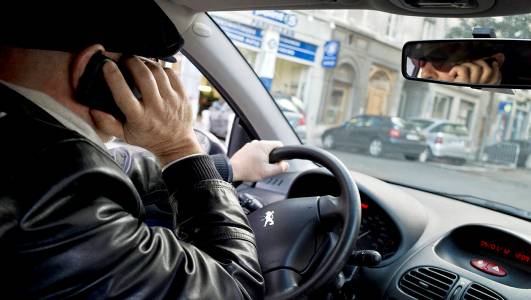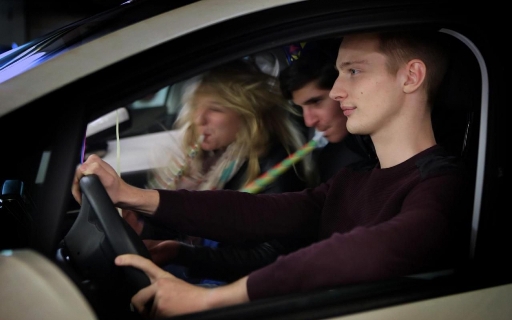Can I stop at the bus stop? This is a question that is relevant for taxi drivers, as well as owners of private cars. None of the drivers want fines. However, not everyone knows the rules of the road. Therefore, in practice, there are often situations where when communicating with the traffic police inspector, careless drivers claim that they just stopped at a bus stop. In some cases, the car may interfere with the movement of the vehicle. However, not everything is so simple.

Law requirements
In accordance with the rules of the road, stops at a distance of less than fifteen meters from places designated for stopping fixed-route vehicles are prohibited.
However, there are exceptions to any of the rules, which will answer the question of whether it is possible to stop at a bus stop.
So, the exception to the SDA is that a stop is allowed for disembarking or boarding passengers. Only on condition that the car does not interfere with the movement of fixed-route vehicles or taxis.
What is a stop?
Before making a final opinion on whether it is possible to stop at a bus stop, you need to understand the terms. This will avoid possible confusion or disputes with traffic police officers.
So, a stop in accordance with the rules of the road is called the termination of the car for a period not exceeding five minutes, if this action is associated with the need to board or drop off passengers.

Distance
It should be noted that the bus stop sign prohibits carrying out this action not only within the so-called pocket intended for public transport. The ban also extends to a distance of fifteen meters before and after the traffic sign.
An exception may be made for fire or emergency vehicles, as well as ambulances, provided that they perform official duties. In this case, the vehicle should be positioned in such a way that it does not interfere with other road users.
Boarding or disembarking passengers

When asked whether it is possible to stop at bus stops, traffic rules give a clear negative answer. That is, this action is not allowed. Moreover, the ban established by law applies not only to the so-called pocket intended for public transport, but also to a distance of fifteen meters before and after it. This distance is counted from the bus stop sign. If it is absent, the driver is recommended to focus on road markings. In some cases, the stop prohibition only applies to public transport pockets.
Knowing that there is a ban on stopping near the “bus stop” sign, some drivers violate this rule and are subsequently perplexed when faced with the need to pay a corresponding fine. Below we will talk about whether it is possible to challenge this administrative offense.
Can I stop at the bus stop?
On the one hand, traffic rules give a clear ban. However, it implies some exceptions. Let's get acquainted with them.
Where a bus stop is located, a vehicle is allowed to last no more than five minutes, subject to certain conditions.
- Boarding or disembarking a passenger.
- Loading or unloading goods.
Another important feature is that the vehicle should not impede public transport.
Exceptions
Such exceptions, in which the prohibition ceases to apply, include an emergency stop associated with a car malfunction, the danger of the cargo being transported, poor health of the driver or a sudden obstacle on the roadway. At the same time, it is important to remember that in accordance with the rules of the road, the driver must quickly free up the occupied place. In this case, an emergency stop sign is required.
It must be understood that in a situation not described in the exceptions, such an action will certainly entail a corresponding penalty in the form of a fine.
To the bus stop
As you can understand, after the appropriate sign, drivers are prohibited from stopping. However, this action is not prohibited until the corresponding sign. It should be remembered that, as a rule, a bilateral ban applies. That is, the driver can leave the vehicle at a distance of no closer than fifteen meters to the sign. This is necessary so that the sign remains visible to other road users, and they can react in time.
Now you know whether you can stop at bus stops or not. And you need to remember that the prohibition also applies to the sign. You can not stop at a distance closer than fifteen meters, not counting some of the exceptional situations that are described above.
In addition, it is important to clearly understand the difference between stopping and parking. The first action does not last longer than five minutes. The second, on the contrary, exceeds a given period of time. Sometimes significantly.

When is it allowed?
In some cases, a stop of more than five minutes is allowed. However, with strict compliance with the following requirements.
- Performing utility or road maintenance works.
- Unloading vehicles that deliver goods to retailers if no alternatives are available.
However, in any case, road safety remains above all.
In response to the question whether it is allowed to stop at a bus stop, there is another exception. It applies to collection and other federal services that perform their own duties.
Can a taxi stop at a bus stop? On the one hand, it seems that this category should relate to public transport. However, traffic rules do not think so. For taxi drivers in this case, the same rules apply as for owners of private cars.

Fine
If the vehicle was stopped at a public transport stop in violation of traffic rules, the driver shall be held administratively liable.
The fine is from one to three thousand rubles. Its exact size depends on whether interference was caused to other road users, as well as on the region of the incident.
This means that it is better for the driver not to risk leaving his own vehicle in order to visit the shopping center or other establishment for a short time. Even if you are absent for less than five minutes, a traffic police officer has the right to write a fine. With a longer absence of the car owner, the car can be evacuated to a fine parking lot, which will certainly entail even greater costs.
It must be borne in mind that the inspector can issue a fine not only with the personal presence of the driver. To fix the offense, enough information from stationary fixing devices.If the driver agrees with the offense, he must pay the penalty within sixty days. After this period, the amount may be increased.
That is why it is better to carefully study the rules of the road and try not to violate them. After all, this entails additional costs or the need to challenge.

How can a driver challenge a fine?
Not every car owner agrees to pay a fine. However, one must understand that in order to challenge it, one must brilliantly know the rules of the road, which those who unintentionally violate them can hardly boast.
Moreover, in some situations, it is possible to challenge the illegality of the collection even in a judicial proceeding.
- If the stopping time is not more than five minutes, and its purpose was the boarding or alighting of passengers, as well as loading or unloading of any items.
- No interference with public transport.
Subject to the above conditions, it is likely that the fine imposed by the traffic police officer can be challenged.

If the driver plans to do this, he should contact the court within ten days from the receipt of a copy of the decision. However, this period can be extended for valid reasons, which include illness, absence in the region, etc.
